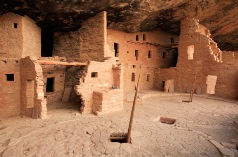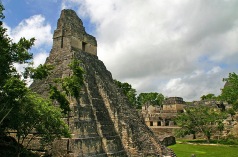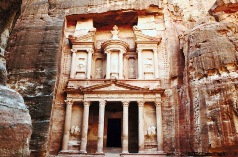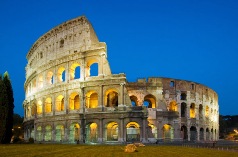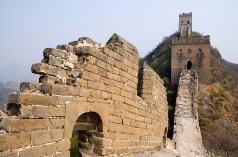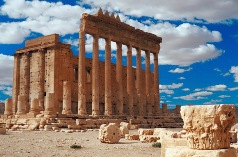Nestlé Purina Petcare, MITRE, and SAS top list compiled by Glassdoor.
If you want a better work-life balance, consider trying to land a job at Nestlé Purina Petcare Company, where you can bring your dog into the office; MITRE, a technology-consulting organization that employees say is family-friendly; or SAS Institute, a business analytics software provider that offers on-site child care, a heathcare center, and a fitness center.
Those companies, when rated by their employees, rank at the top of a new list for work-life balance created by Glassdoor, a website that offers insight into careers and companies, as well as job listings. This is the first year Glassdoor has produced such a list, reflecting what could be interpreted as an increasing desire for workplace policies that allow employees to meet family and personal responsibilities.
"A lot of companies talk about a good work-life balance," says Robert Hohman, CEO and co-founder of Glassdoor. "But not that many deliver. The [companies] on this list actually deliver."
The list is based on survey results from more than 150,000 employees who work or have worked at 36,000 companies. Between April 2010 and March 2011, they rated their satisfaction with their employer's support of balancing work and personal life, as well as management's support of taking time off when necessary.
Because work-life balance can be achieved in different ways, Hohman breaks it down into two camps. The first is telecommuting and other opportunities for flexible scheduling, which allows employees to be out of the office when they need to. "We see that in the case of MITRE," he says.
Other companies help employees bring more of their life to work, Hohman says, such as Facebook, which ranked No. 7. These employers offer amenities like on-site laundry, food services, and child care. Because such perks make work more pleasant for employees, they end up benefiting the company, too. "Companies that have a strong work-life balance are optimized for long-term success," Hohman says. "Those companies tend to keep employers longer, and those employees tend to be happier. And I would argue, in turn, those employees tend to be more productive over the long term."
Indeed, work-life balance is about more than reputation; it also helps companies retain their best employees. Offering flexible scheduling is the most effective way of improving employee retention rates, says Dick Finnegan, a former human-resources director and CEO of C-Suite Analytics, which helps companies decrease employee turnover. "The more liberal companies can be with letting people pick their own schedule times, letting them work from home, letting them -- especially people who travel a lot -- have no established schedules, letting people leverage technology to work from anywhere -- the more companies aggressively offer those things, the higher their retention."
If your company doesn't offer those policies, look to your direct boss to help you create a comfortable balance between your work and personal life. "Individual supervisors can trump company policies," Finnegan says.
Nestlé Purina Petcare Company, a maker of dog and cat food, has 9,850 employees globally, most of them in St. Louis, where the company's based. And yes, they're hiring; a spokeswoman says the company has openings for marketers, copywriters, accountants, engineers, sales representatives, paralegals, and more. But before you apply, make sure you'll fit in with a furry-friend-loving culture. "Bringing pets to work is a major plus," one employee wrote on Glassdoor, where you have to rate your own company to read other employees' reviews. "Pets on the work floor make everyone happier."
The MITRE Corporation, which is based in Bedford, Mass., and McLean, Va., employs about 7,000 scientists, engineers, and support specialists, according to the company's website. "Employees can adjust their hours around their children's schedules," an employee wrote on Glassdoor. "I don't miss a thing with my kids' lives, and I wouldn't trade that for anything."
But there's a drawback to working for a company where employees want to stay for the long haul, points out one Nestlé Purina employee. "People never leave, so there's not a lot of opportunity to grow or move around," the employee complained anonymously on Glassdoor.
That's likely to change over the next few years, says Steve Degnan, who oversees human resources for Nestlé Purina's North America division. (The company also has nearly 2,500 employees in Latin America.) A high percentage of the company's employees are baby boomers, he says, who will likely retire in the next five to 10 years, offering plenty of room for other employees to grow and for the company to hire new workers.
"I would not mistake being recognized for work-life balance for a lack of intensity," Degnan says. "You walk into our building and you can see and feel a level of comfort, but it's still a passionate, intensively competitive [environment]."
Interested in working for one of these companies? Here are a few ideas for how to get your foot in the door (follow the links for tips on each job-search strategy):
Use your online network. Look up the company on LinkedIn to see whether any of your contacts work there. Do the same on Facebook, using new networking tool In the Door. Having a personal recommendation can go a long way toward helping you get noticed.
If you don't have a contact, make one. Check to see whether the company or their recruiting arm is on Twitter, and work to establish a relationship. Or research the company's employees on LinkedIn to find out where they interact, both in person and online, and show up there to get to know them. (Hint: If you take this route, build relationships before going in for the kill.)
Pitch the company. Rather than waiting for an opening, contact the company and tell them why they should hire you.
Check out the company's advertised openings. Find the company's Careers page on their website or LinkedIn profile to learn whether any of their openings fit what you're looking for. Glassdoor also lists open positions for each company.
Here's Glassdoor's full list of companies with the best work-life balance:
1. Nestlé Purina Petcare Company
2. MITRE
3. SAS Institute
4. FactSet
5. United Space Alliance
6. Slalom Consulting
7. Facebook
8. Morningstar
9. Susquehanna International Group
10. Colgate-Palmolive
11. Mentor Graphics
12. Autodesk
13. Sheetz
14. Agilent Technologies
15. Turner Broadcasting
16. Dupont
17. Southwest Airlines
18. General Mills
19. Biogen Idec
20. Scottrade
21. Chevron
22. Synopsys
23. MTV Networks
24. Intuit
25. National Instruments
 The European rotary-winged aircraft consortium — and sister company of Airbus under the EADS umbrella — has teamed up with Mercedes-Benz to outfit its twin-engine utility helicopter for business-luxury transport. The lead on the project was undertaken by the company’s Advanced Design Studio in Como, Italy, which pulled design cues from the company’s designo roster of interior packages. Not to compare apples to oranges, the EC145 Mercedes-Benz Style is more akin to a S65than an SL. Or, with its land-darn-near-anywhere capability, a G-Class SUV.
The European rotary-winged aircraft consortium — and sister company of Airbus under the EADS umbrella — has teamed up with Mercedes-Benz to outfit its twin-engine utility helicopter for business-luxury transport. The lead on the project was undertaken by the company’s Advanced Design Studio in Como, Italy, which pulled design cues from the company’s designo roster of interior packages. Not to compare apples to oranges, the EC145 Mercedes-Benz Style is more akin to a S65than an SL. Or, with its land-darn-near-anywhere capability, a G-Class SUV. http://autos.yahoo.com/news/the-mercedes-benz-helicopter.html
http://autos.yahoo.com/news/the-mercedes-benz-helicopter.html




 Oleh
Oleh 




